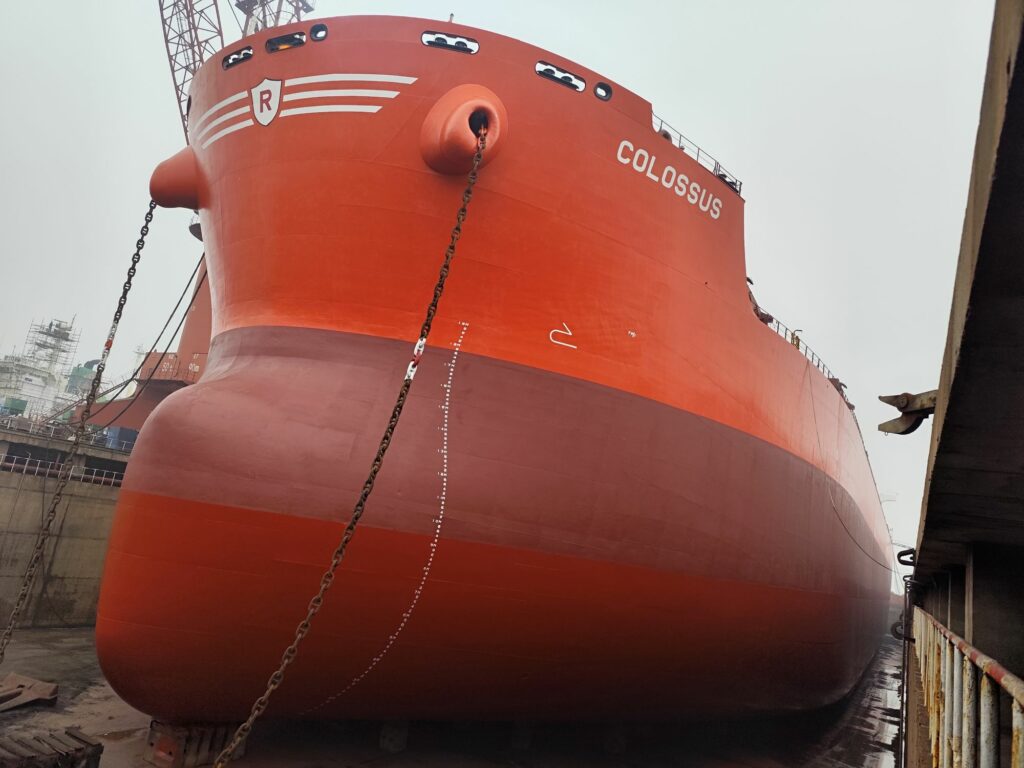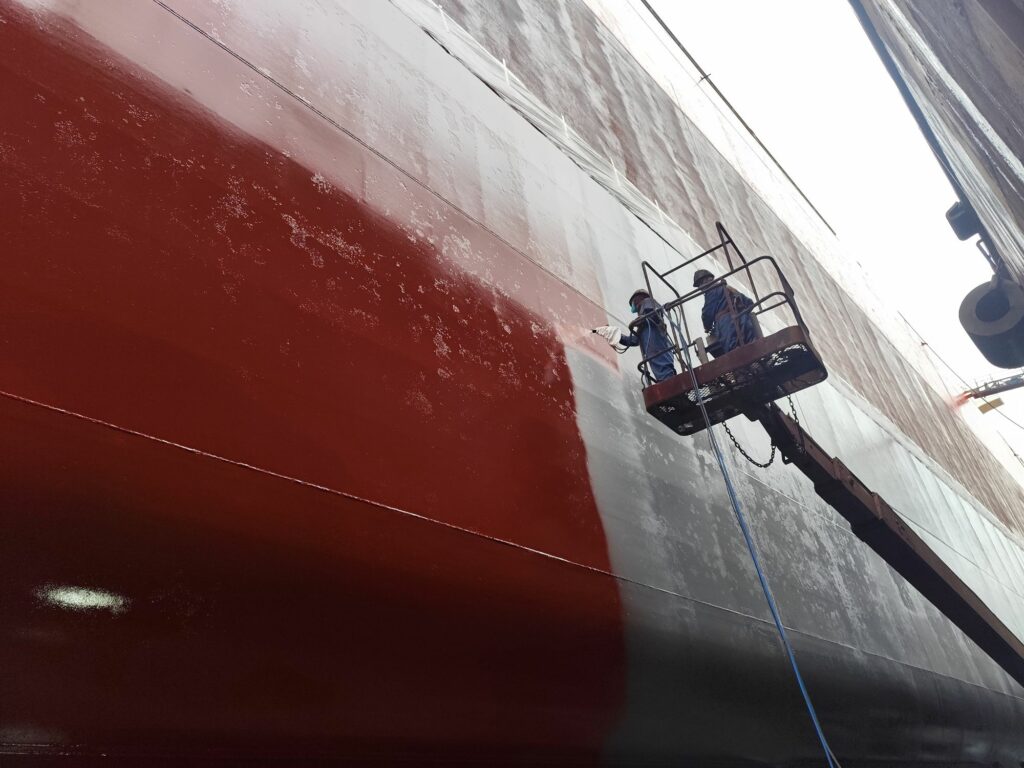
PPG recently completed the 100th dry docking in which electrostatic application of premium fouling control coatings was used. (Photo: PPG/Business Wire)
PPG’s electrostatic application of marine hull coatings is reported to improve efficiency and reduce waste.
AMSTERDAM—Coatings manufacturer PPG reported that it recently performed the 100th dry docking using electrostatic application for marine hull coatings.
The company completed the project on the MV Colossus, a 287-meter bulk carrier owned by Enterprises Shipping and Trading S.A. at CUD Weihai Shipyard Co. Ltd., in China. The team applied PPG NEXEON™ 810 antifouling on the boot top and PPG SIGMAGLIDE® 2390 fouling release coating on the underwater hull, PPG said in a release.
According to PPG, it is the first coatings company to introduce the application technique to the marine sector. The company stated that it has used electrostatic spraying in the automotive and aerospace industries for decades.
The method uses an electrostatic spray gun to apply the coating to a grounded metal hull, with electrically charged paint particles precisely guided toward the vessel’s surface. This results in even distribution and the formation of what PPG called “an ultrasmooth, long-lasting film layer.” Compared to traditional airless spraying, electrostatic application is said to increase transfer efficiency. This is said to result in significant reductions in overspray and waste while providing a cleaner operation and improved work environment for applicators.

PPG optimizes its premium fouling control coatings for electrostatic application, a sustainable technique that is reported to offer improved efficiency and reduced waste. (Photo: PPG/Business Wire)
The company said that its focus on innovation and sustainability led to the development of premium fouling control coatings specifically designed for electrostatic application.
The unique formulation of both PPG Sigmaglide fouling release coating and PPG Nexeon 810 antifouling coating is reported to ensure compatibility with the application method. These low-friction hull coatings also provide benefits in fuel consumption and greenhouse gas emissions savings, the company said in the release.
“We’re continuing to expand electrostatic application across our global network to help shipowners and shipyards comply with increased regulations and sustainability goals,” said Sijmen Visser, PPG sales director for Marine EMEA, Protective and Marine Coatings, in the release. “We already see it quickly being adopted by large shipping companies and shipyards in Europe, Oman, Dubai, Turkey, Singapore, and China.”
The technique has already demonstrated measurable results in recent projects, according to PPG. EDR Antwerp shipyard reportedly confirmed a 40 percent reduction in overspray using electrostatic application of PPG Sigmaglide coating on a RoRo passenger vessel from Stena Line.
“PPG continues to work closely with shipyards, owners, and operators to offer innovative marine coating technologies that drive operational efficiency and environmental compliance worldwide,” Visser said.
PPG is a manufacturer of paints, coatings, and specialty materials for customers in construction, consumer products, industrial, and transportation markets and aftermarkets.
